Shaohuan Cheng
A Compressive Memory-based Retrieval Approach for Event Argument Extraction
Sep 14, 2024



Abstract:Recent works have demonstrated the effectiveness of retrieval augmentation in the Event Argument Extraction (EAE) task. However, existing retrieval-based EAE methods have two main limitations: (1) input length constraints and (2) the gap between the retriever and the inference model. These issues limit the diversity and quality of the retrieved information. In this paper, we propose a Compressive Memory-based Retrieval (CMR) mechanism for EAE, which addresses the two limitations mentioned above. Our compressive memory, designed as a dynamic matrix that effectively caches retrieved information and supports continuous updates, overcomes the limitations of the input length. Additionally, after pre-loading all candidate demonstrations into the compressive memory, the model further retrieves and filters relevant information from memory based on the input query, bridging the gap between the retriever and the inference model. Extensive experiments show that our method achieves new state-of-the-art performance on three public datasets (RAMS, WikiEvents, ACE05), significantly outperforming existing retrieval-based EAE methods.
Beyond Single-Event Extraction: Towards Efficient Document-Level Multi-Event Argument Extraction
May 03, 2024



Abstract:Recent mainstream event argument extraction methods process each event in isolation, resulting in inefficient inference and ignoring the correlations among multiple events. To address these limitations, here we propose a multiple-event argument extraction model DEEIA (Dependency-guided Encoding and Event-specific Information Aggregation), capable of extracting arguments from all events within a document simultaneouslyThe proposed DEEIA model employs a multi-event prompt mechanism, comprising DE and EIA modules. The DE module is designed to improve the correlation between prompts and their corresponding event contexts, whereas the EIA module provides event-specific information to improve contextual understanding. Extensive experiments show that our method achieves new state-of-the-art performance on four public datasets (RAMS, WikiEvents, MLEE, and ACE05), while significantly saving the inference time compared to the baselines. Further analyses demonstrate the effectiveness of the proposed modules.
Enhancing Document-level Event Argument Extraction with Contextual Clues and Role Relevance
Oct 20, 2023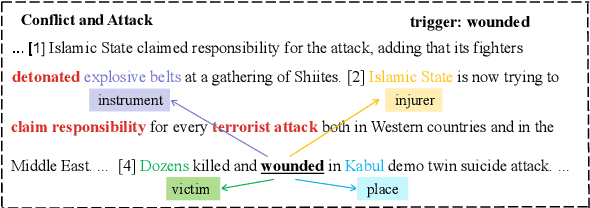

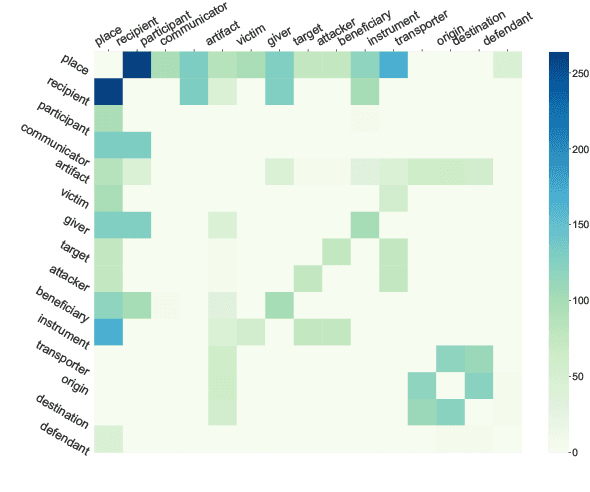
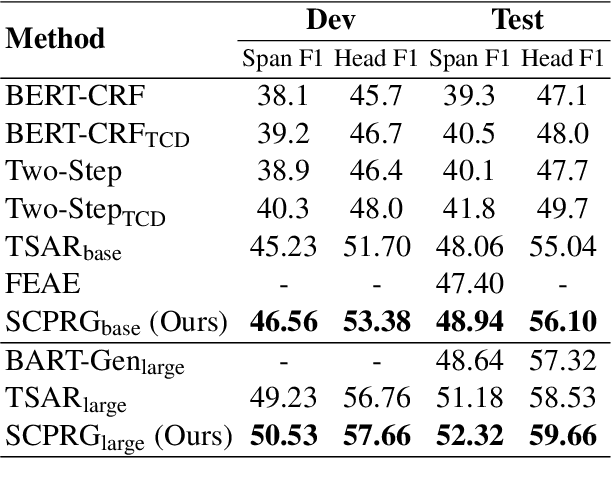
Abstract:Document-level event argument extraction poses new challenges of long input and cross-sentence inference compared to its sentence-level counterpart. However, most prior works focus on capturing the relations between candidate arguments and the event trigger in each event, ignoring two crucial points: a) non-argument contextual clue information; b) the relevance among argument roles. In this paper, we propose a SCPRG (Span-trigger-based Contextual Pooling and latent Role Guidance) model, which contains two novel and effective modules for the above problem. The Span-Trigger-based Contextual Pooling(STCP) adaptively selects and aggregates the information of non-argument clue words based on the context attention weights of specific argument-trigger pairs from pre-trained model. The Role-based Latent Information Guidance (RLIG) module constructs latent role representations, makes them interact through role-interactive encoding to capture semantic relevance, and merges them into candidate arguments. Both STCP and RLIG introduce no more than 1% new parameters compared with the base model and can be easily applied to other event extraction models, which are compact and transplantable. Experiments on two public datasets show that our SCPRG outperforms previous state-of-the-art methods, with 1.13 F1 and 2.64 F1 improvements on RAMS and WikiEvents respectively. Further analyses illustrate the interpretability of our model.
A Dual-Perception Graph Neural Network with Multi-hop Graph Generator
Oct 22, 2021

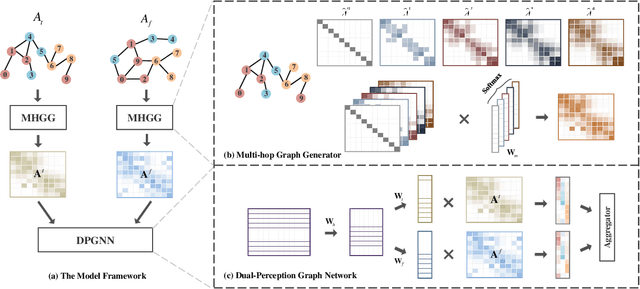
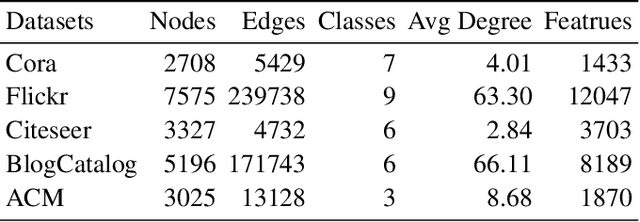
Abstract:Graph neural networks (GNNs) have drawn increasing attention in recent years and achieved remarkable performance in many graph-based tasks, especially in semi-supervised learning on graphs. However, most existing GNNs excessively rely on topological structures and aggregate multi-hop neighborhood information by simply stacking network layers, which may introduce superfluous noise information, limit the expressive power of GNNs and lead to the over-smoothing problem ultimately. In light of this, we propose a novel Dual-Perception Graph Neural Network (DPGNN) to address these issues. In DPGNN, we utilize node features to construct a feature graph, and perform node representations learning based on the original topology graph and the constructed feature graph simultaneously, which conduce to capture the structural neighborhood information and the feature-related information. Furthermore, we design a Multi-Hop Graph Generator (MHGG), which applies a node-to-hop attention mechanism to aggregate node-specific multi-hop neighborhood information adaptively. Finally, we apply self-ensembling to form a consistent prediction for unlabeled node representations. Experimental results on five datasets with different topological structures demonstrate that our proposed DPGNN outperforms all the latest state-of-the-art models on all datasets, which proves the superiority and versatility of our model. The source code of our model is available at https://github.com.
 Add to Chrome
Add to Chrome Add to Firefox
Add to Firefox Add to Edge
Add to Edge